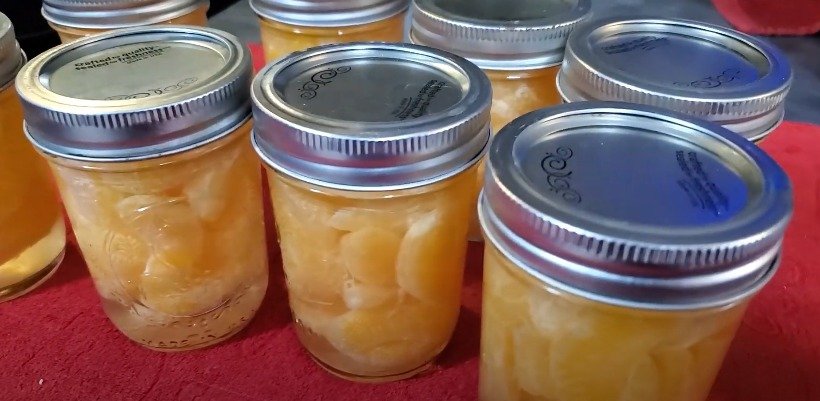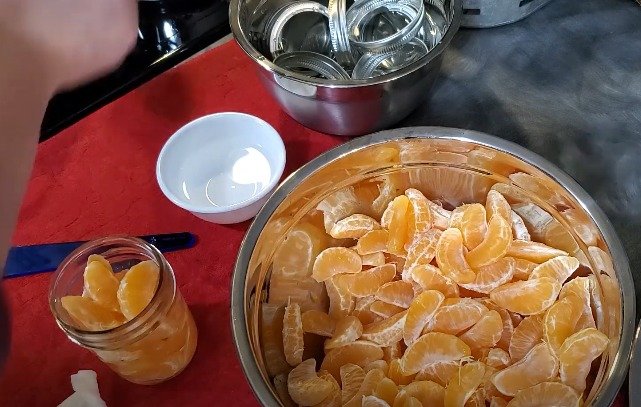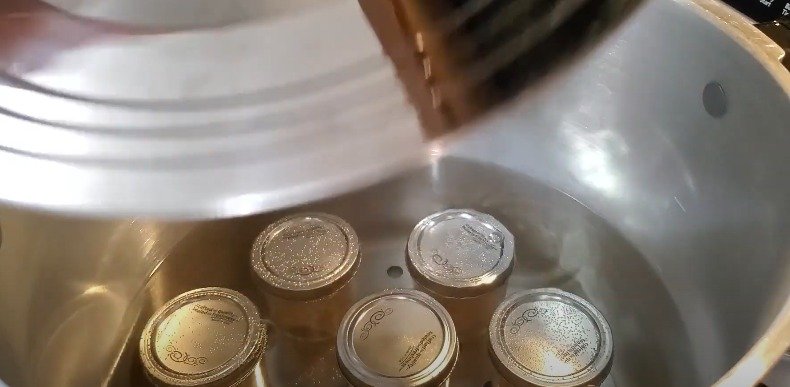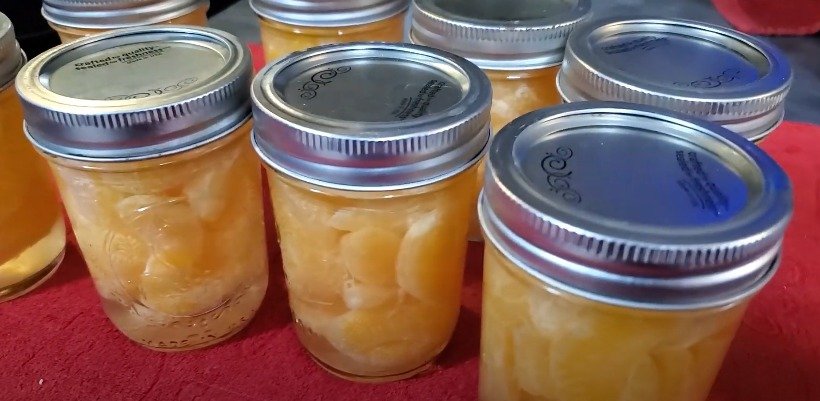Water Bath Canning Mandarin Oranges: A Beginner’s Guide

mandarin oranges
water
sugar
1
Hello everyone! I'm Darcy from The Purposeful Pantry, and welcome back to my channel. I'm thrilled to be part of the 2020 Jars of January event, and today, I’m excited to share my latest canning project: water bath canning mandarin oranges. This is my very first water bath canning project, and I'm eager to show you how you can extend the life of these delicious little oranges, especially when they're in season and on sale.
Why Water Bath Can Mandarin Oranges?
Mandarin oranges are a fantastic fruit to can because they’re in season during the winter, making them affordable and plentiful. By canning them, you can enjoy their sweet, tangy flavor all year round. Even though the canning process reduces their vitamin C content, these oranges remain a nutritious addition to your pantry.

2
Tools and Ingredients You’ll Need
Presto 23 Quart Canner: Although typically used for pressure canning, it’s perfect for this water bath canning project.
Filtered Water and Sugar: For making a very light syrup (4 cups of water and 3/4 cup of sugar).

3
Mandarin Oranges: Washed thoroughly in hot soapy water with a bit of baking soda to remove any residues.
Jar Lifter, Bubble Tool, and Lid Magnet: Essential tools for handling jars safely and ensuring a proper seal.

4
Jars and Lids: Sterilized and ready for canning.
Step-by-Step Guide to Water Bath Canning Mandarin Oranges
Prepare Your Canning Equipment:
Sterilize your jars by boiling them in your canner.
Prepare a very light syrup by dissolving 3/4 cup of sugar in 4 cups of water.
Peel and Segment the Oranges:
Peel the mandarin oranges and remove as much of the white pith and strings as possible.
Separate the oranges into segments. These segments will fit neatly into your jars.
Fill the Jars:
Place the orange segments into the sterilized jars, leaving about 1/2 inch of headspace.
Pour the hot syrup (or water/juice) over the segments, maintaining the headspace.
Use a bubble tool to remove any air bubbles by gently stirring.
Seal the Jars:
Wipe the rims of the jars with a clean cloth dipped in vinegar to ensure there’s no residue that could interfere with sealing.
Place the lids on the jars and screw the rings on until they are finger-tight.
Process in the Water Bath Canner:
Place the jars in the water bath canner.
Bring the water to a boil and process the jars for 10 minutes. Adjust the time based on your altitude using a reliable chart.
Cool and Store:
Turn off the heat and let the jars sit in the water for about 5 minutes.
Remove the jars and let them cool for 24 hours in a draft-free area.
After cooling, check the seals. If the lids don’t bounce back when pressed, they are sealed properly.

5
Wash the jars to remove any sticky residue, and label them with the date.
Final Thoughts
Canning mandarin oranges is a simple and rewarding project that can bring a bit of sunshine to your pantry all year round. Whether you enjoy them in desserts, salads, or straight from the jar, these canned mandarins are sure to be a family favorite.
Happy canning
Remember to leave your rings off when storing your jars to prevent rust and ensure a longer shelf life

Ingredients
mandarin oranges
water
sugar
Directions
1
Hello everyone! I'm Darcy from The Purposeful Pantry, and welcome back to my channel. I'm thrilled to be part of the 2020 Jars of January event, and today, I’m excited to share my latest canning project: water bath canning mandarin oranges. This is my very first water bath canning project, and I'm eager to show you how you can extend the life of these delicious little oranges, especially when they're in season and on sale.
Why Water Bath Can Mandarin Oranges?
Mandarin oranges are a fantastic fruit to can because they’re in season during the winter, making them affordable and plentiful. By canning them, you can enjoy their sweet, tangy flavor all year round. Even though the canning process reduces their vitamin C content, these oranges remain a nutritious addition to your pantry.

2
Tools and Ingredients You’ll Need
Presto 23 Quart Canner: Although typically used for pressure canning, it’s perfect for this water bath canning project.
Filtered Water and Sugar: For making a very light syrup (4 cups of water and 3/4 cup of sugar).

3
Mandarin Oranges: Washed thoroughly in hot soapy water with a bit of baking soda to remove any residues.
Jar Lifter, Bubble Tool, and Lid Magnet: Essential tools for handling jars safely and ensuring a proper seal.

4
Jars and Lids: Sterilized and ready for canning.
Step-by-Step Guide to Water Bath Canning Mandarin Oranges
Prepare Your Canning Equipment:
Sterilize your jars by boiling them in your canner.
Prepare a very light syrup by dissolving 3/4 cup of sugar in 4 cups of water.
Peel and Segment the Oranges:
Peel the mandarin oranges and remove as much of the white pith and strings as possible.
Separate the oranges into segments. These segments will fit neatly into your jars.
Fill the Jars:
Place the orange segments into the sterilized jars, leaving about 1/2 inch of headspace.
Pour the hot syrup (or water/juice) over the segments, maintaining the headspace.
Use a bubble tool to remove any air bubbles by gently stirring.
Seal the Jars:
Wipe the rims of the jars with a clean cloth dipped in vinegar to ensure there’s no residue that could interfere with sealing.
Place the lids on the jars and screw the rings on until they are finger-tight.
Process in the Water Bath Canner:
Place the jars in the water bath canner.
Bring the water to a boil and process the jars for 10 minutes. Adjust the time based on your altitude using a reliable chart.
Cool and Store:
Turn off the heat and let the jars sit in the water for about 5 minutes.
Remove the jars and let them cool for 24 hours in a draft-free area.
After cooling, check the seals. If the lids don’t bounce back when pressed, they are sealed properly.

5
Wash the jars to remove any sticky residue, and label them with the date.
Final Thoughts
Canning mandarin oranges is a simple and rewarding project that can bring a bit of sunshine to your pantry all year round. Whether you enjoy them in desserts, salads, or straight from the jar, these canned mandarins are sure to be a family favorite.
Happy canning
Remember to leave your rings off when storing your jars to prevent rust and ensure a longer shelf life

Leave a Review
Please log in or register for a new account in order to leave a review.








